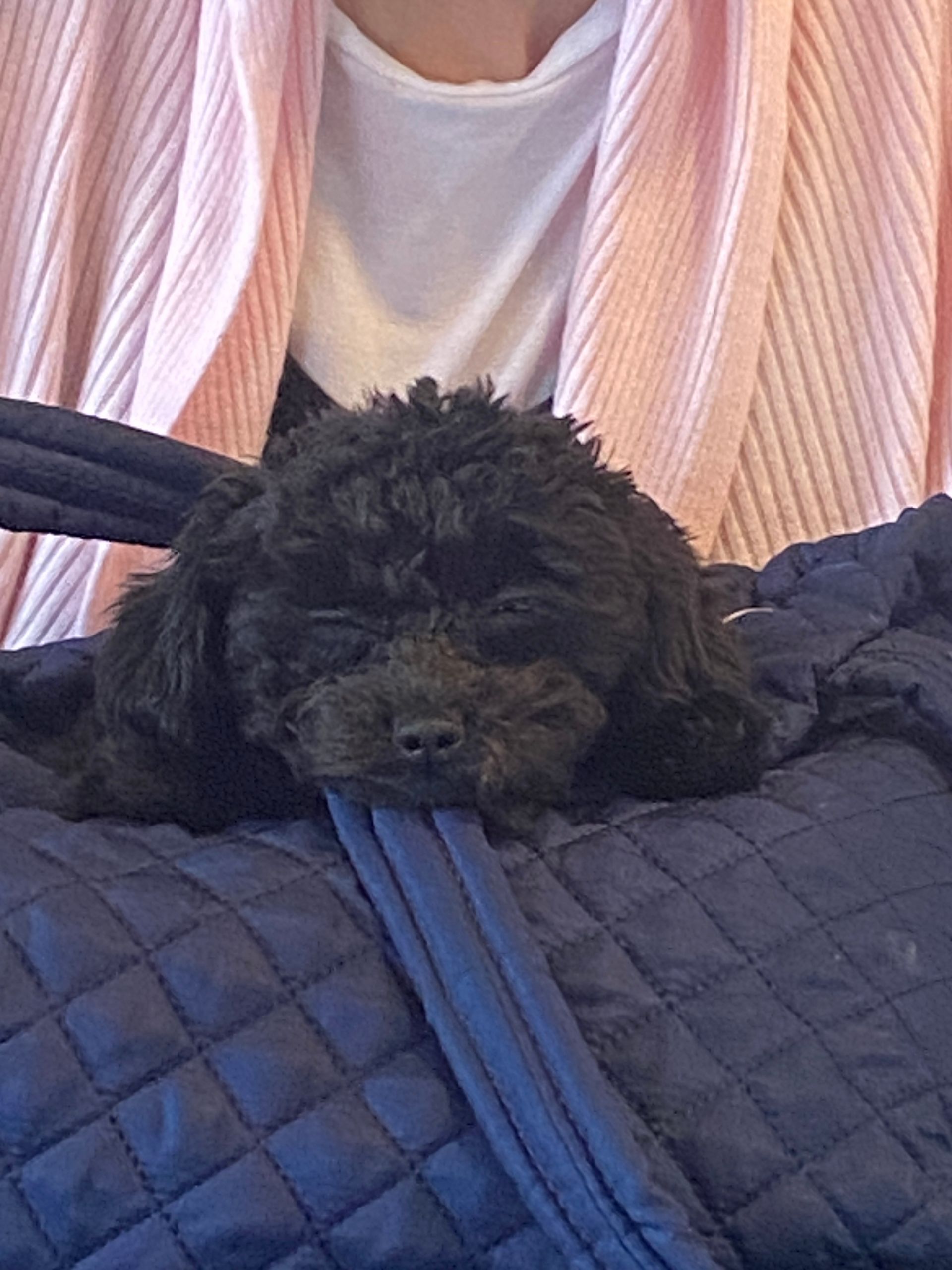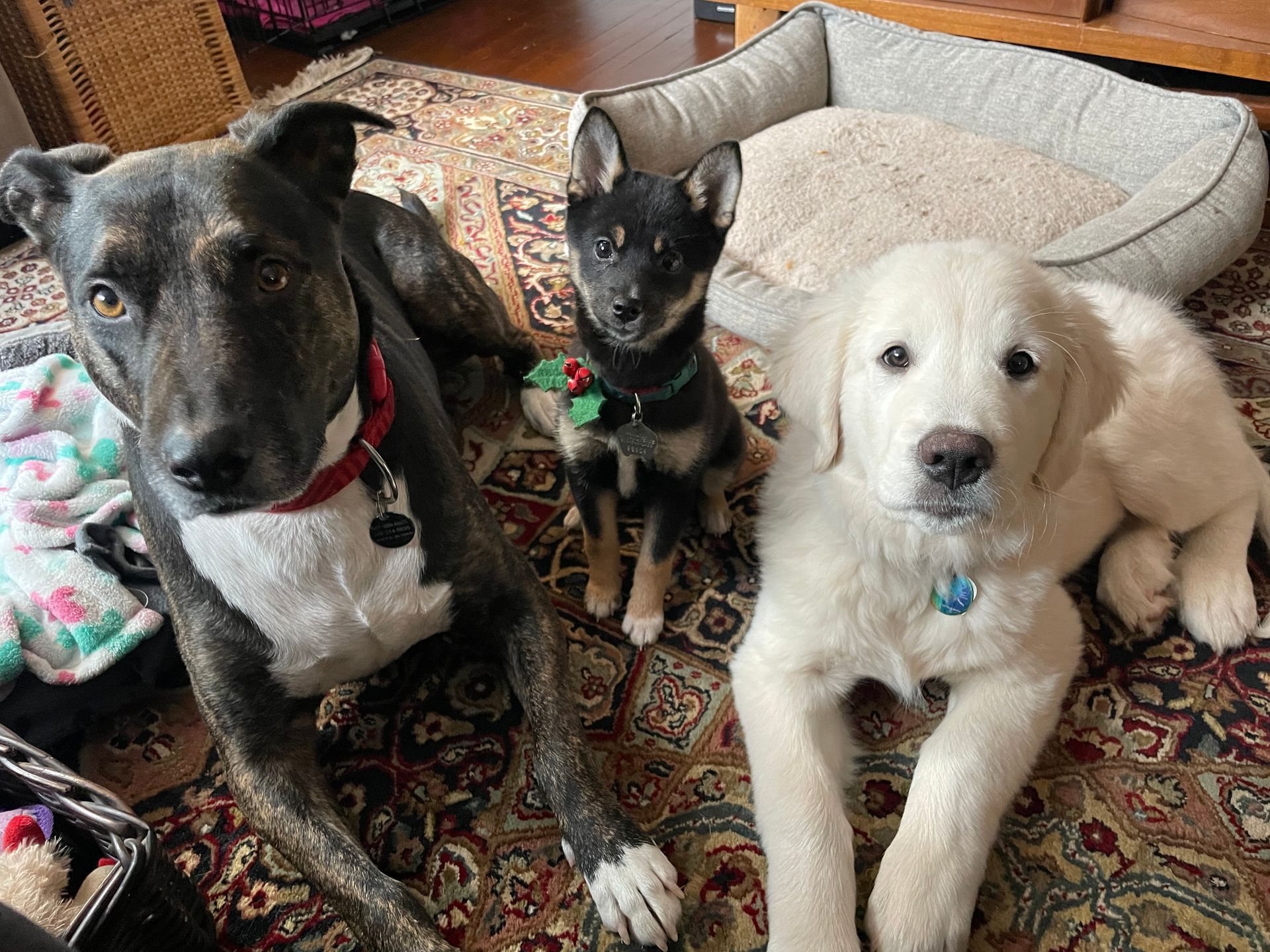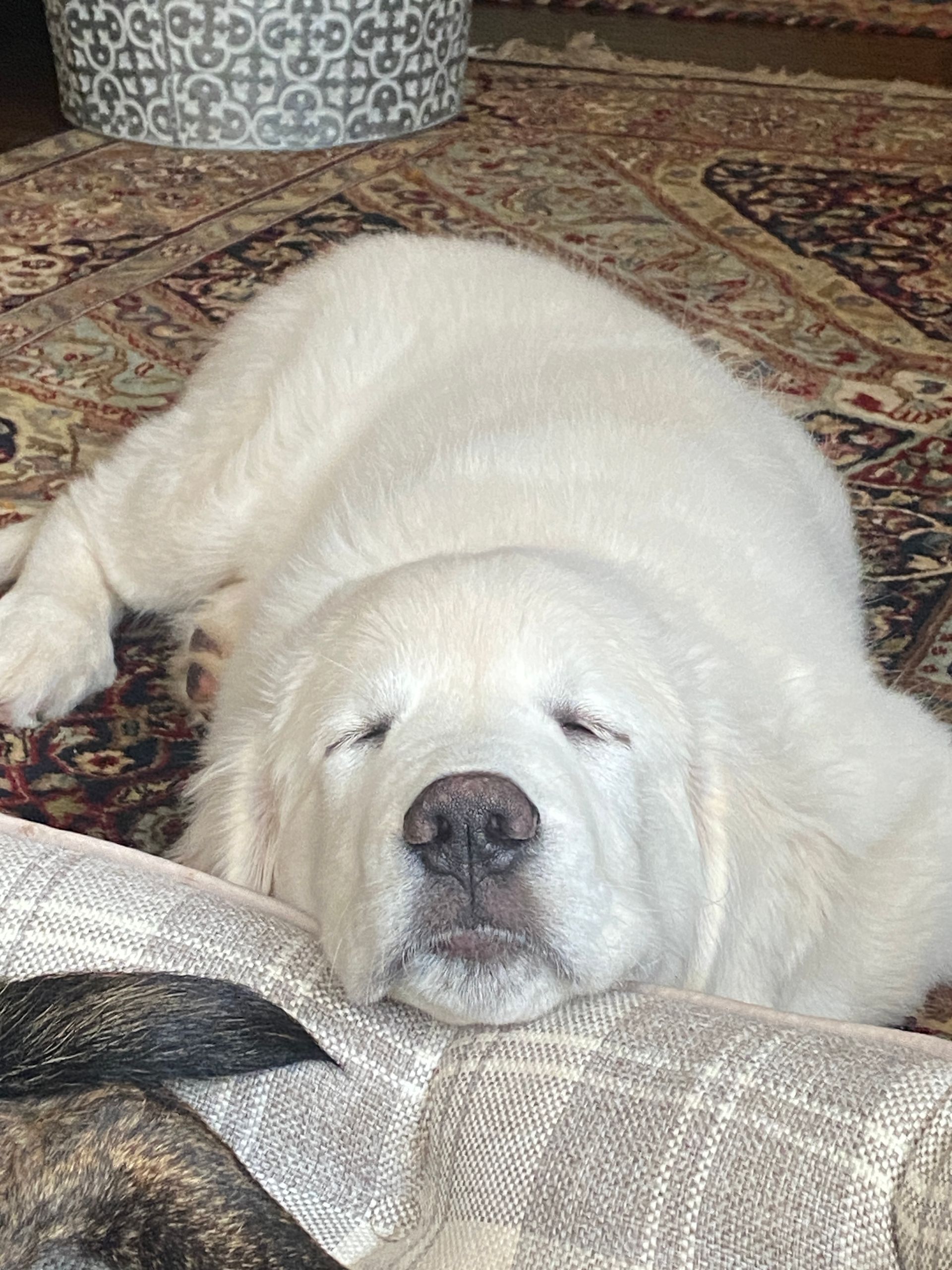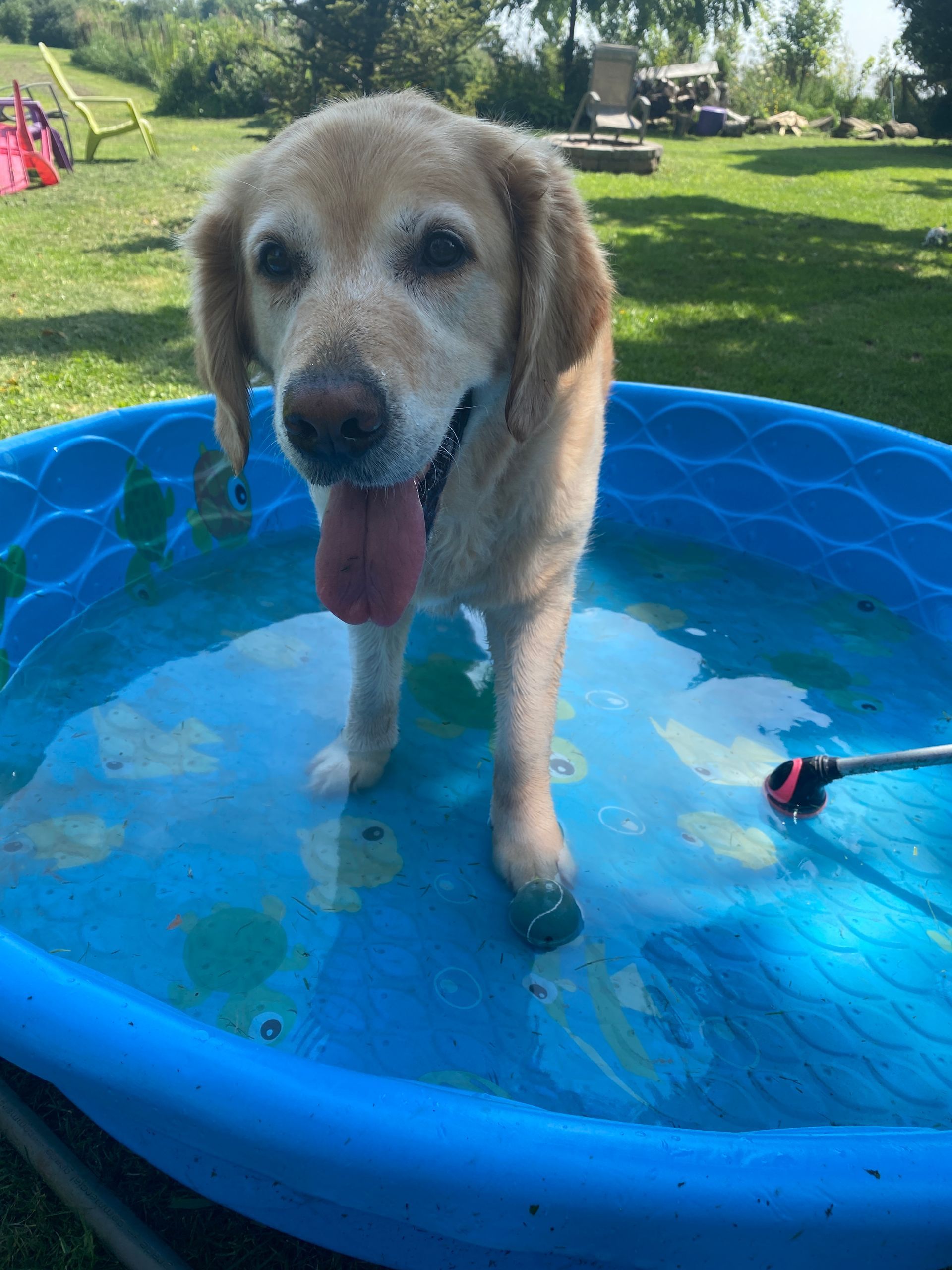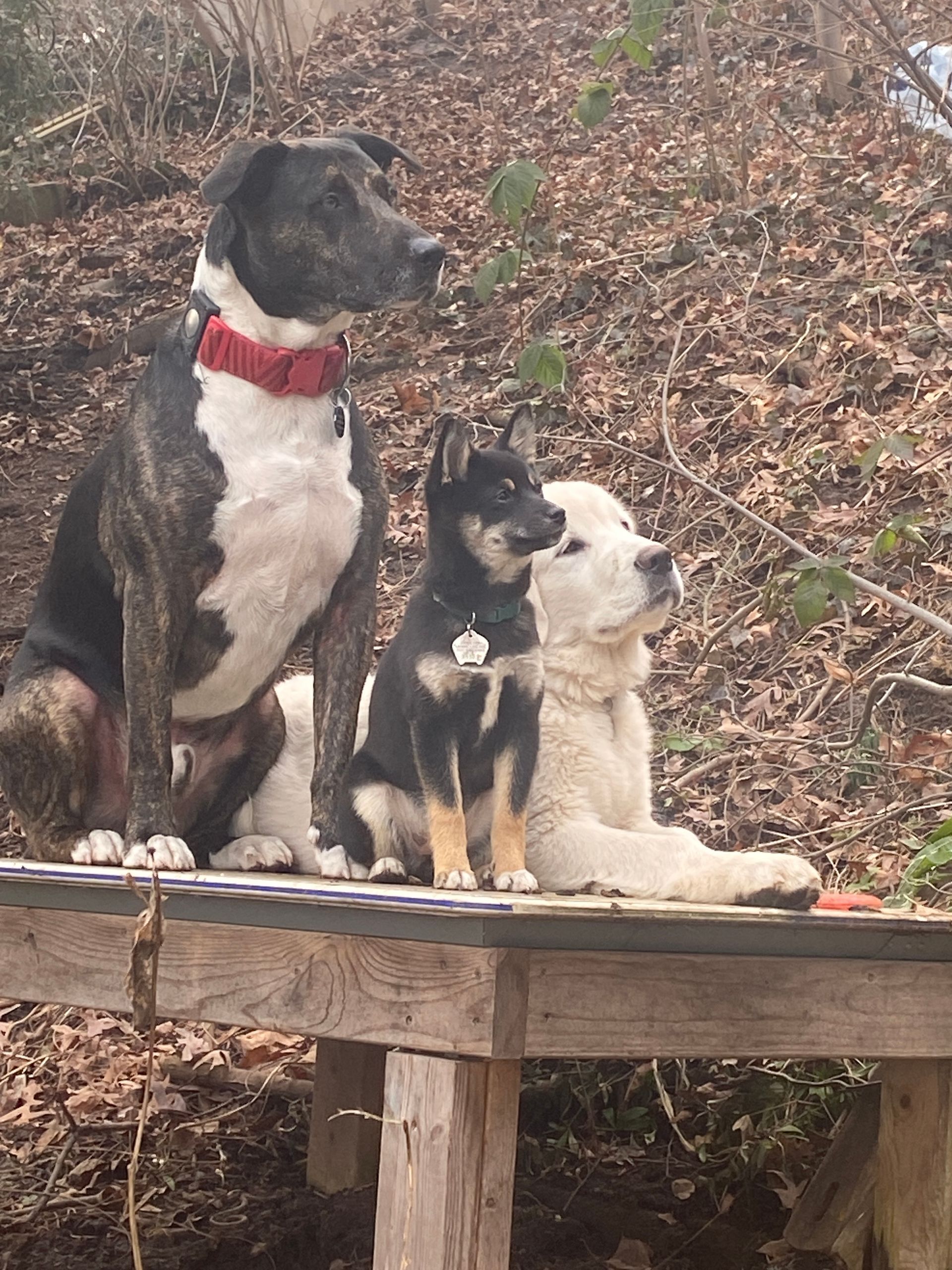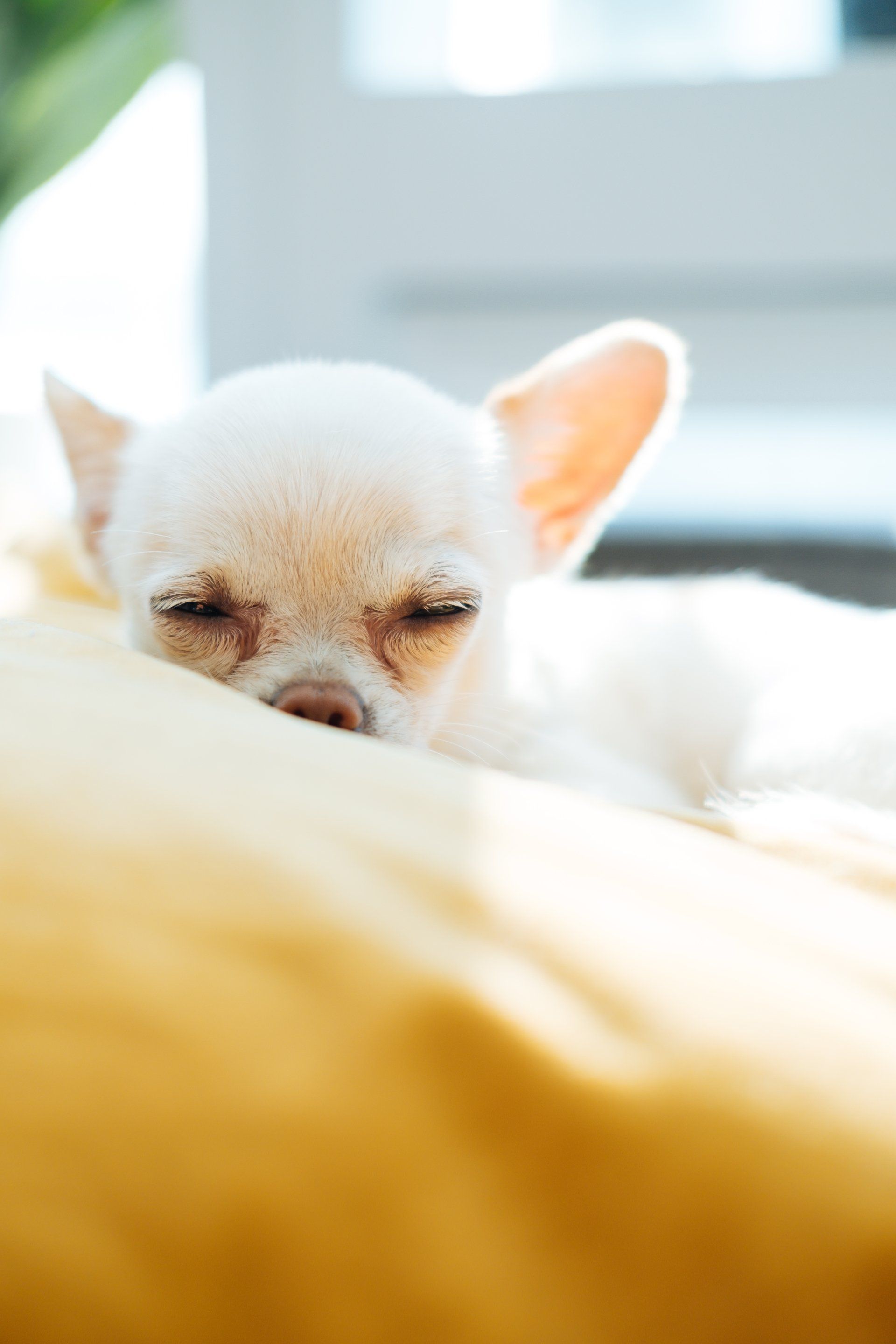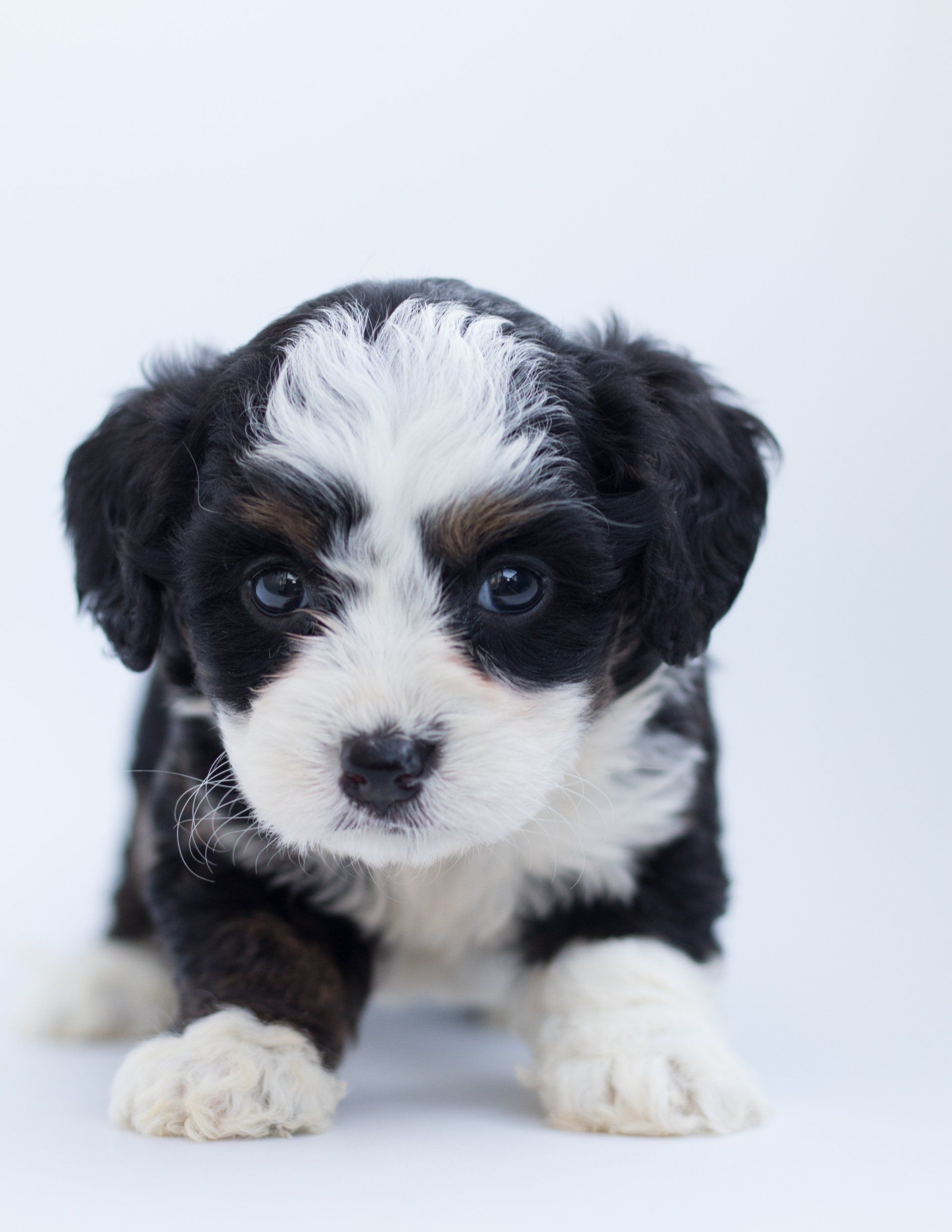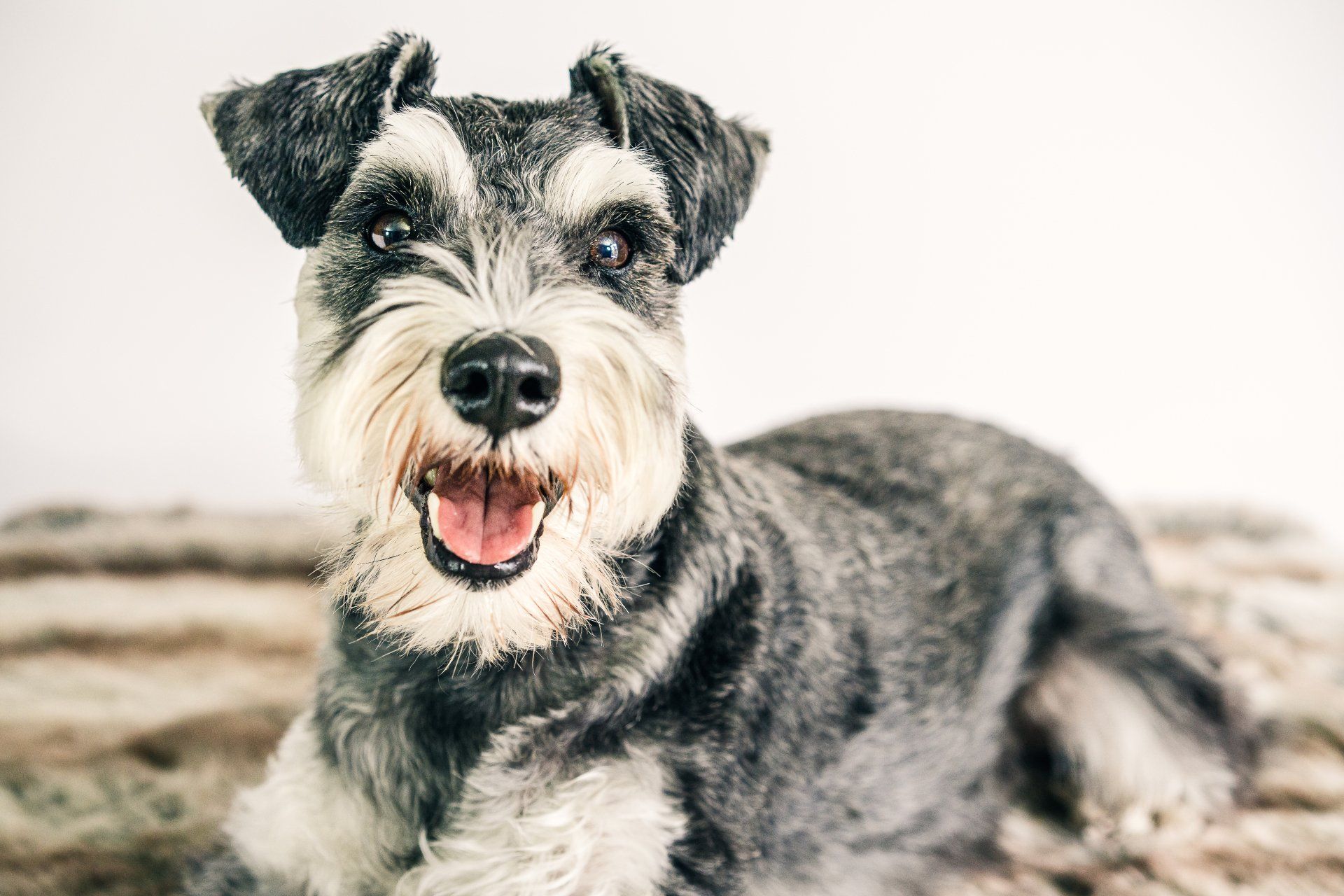Games 4 Dogs
35 Fun Games to Prevent Your Dog From Acting Like A Puppy Again
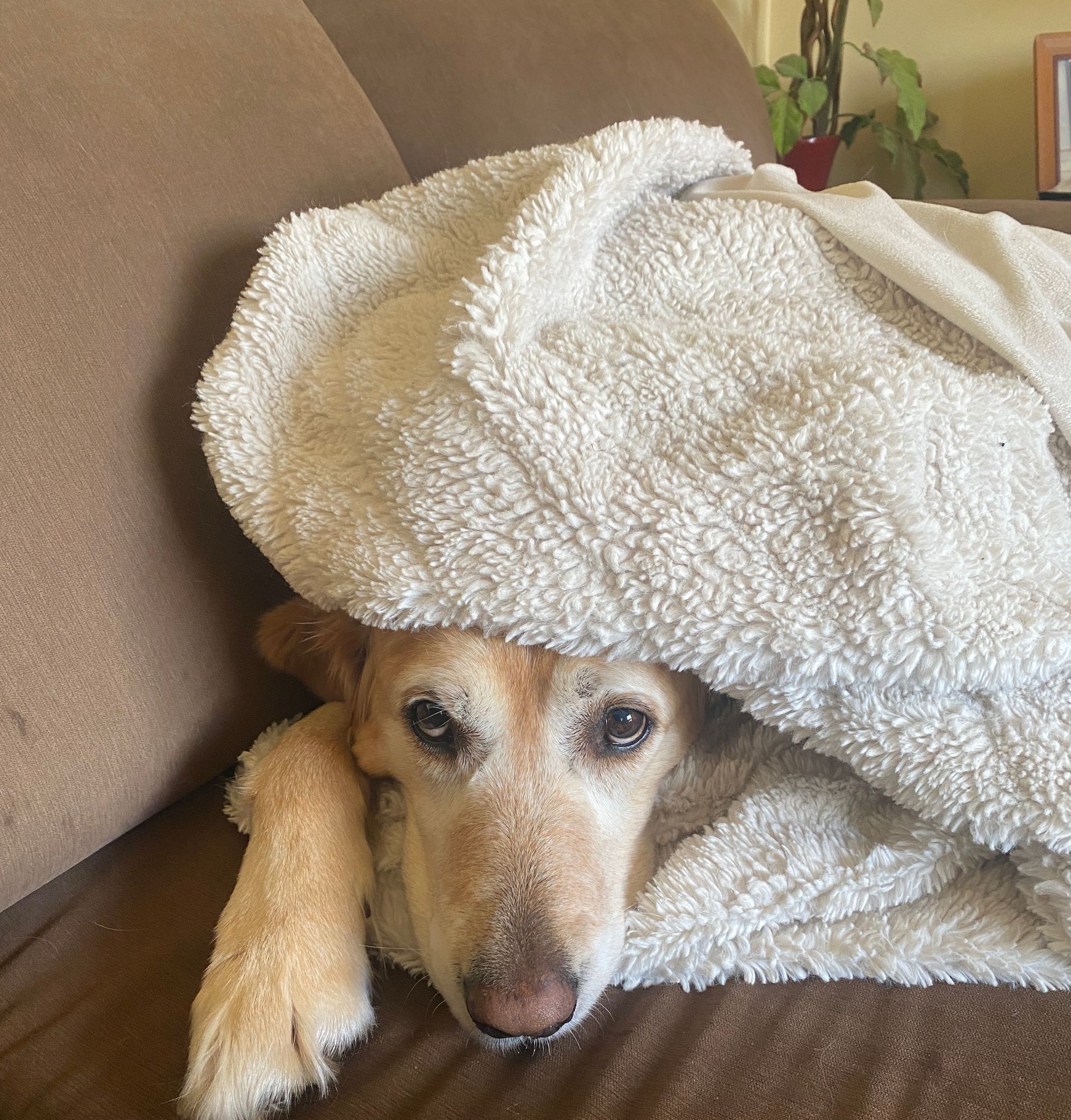
As a full-time dog trainer, I often get new clients asking, "Why is my dog acting like a puppy again?" Many are puzzled by their old dog acting like a puppy, displaying behaviours they thought were long outgrown. While every dog is unique, my experience has shown that there are patterns to this type of issue. When an older dog starts misbehaving and acting like a puppy again, it's important to consider various factors that could be contributing to the behaviour.
One aspect to examine is your own behavior and habits. Are you inadvertently reinforcing undesirable behaviour without realizing it? Perhaps you've been indulging your dog with treats from your plate, allowing them to jump up, leading on walks, or entering doors ahead of you. Take a moment to reflect on how you've been interacting with your dog. Chances are, your actions could be part of the problem. By correcting your own habits and setting consistent boundaries, you can help guide your dog back to more appropriate behaviour.
Remember, dogs often mirror the behaviours and cues they receive from their owners. So, by leading with positive reinforcement and clear expectations, you can encourage your older dog to follow suit and exhibit better behaviour.
There are seven foundational skills I teach to all my new dog clients and their pet parents: Watch Me, Sit, Down, Stay, Leave It, Come, and Heel. Once the puppy has learned these foundational skills (or the rescue has learned each skill once they arrive in their forever home), I show pet parents fun ways to reinforce these skills every day.
5 Fun Games to Rebuild Obedience Skills: Improving Watch Me/Look ("watch me" and "look" are used to get your pup to look back at you. Choose whichever word feels best for your family).
These fun games not only help rebuild your pup's "watch me" skills but also turn training sessions into enjoyable bonding experiences for both you and your four legged friend
Hide and Seek: Start by having your dog sit or stay. Then, hide behind furniture or around a corner. Call your dog's name followed by the "watch me" command. When they find you and make eye contact, reward them with praise and a treat. This game not only reinforces "watch me" but also enhances recall skills and strengthens the bond between you and your dog.
Treat Toss: Hold a treat in your hand and show it to your dog. Then, toss the treat a short distance away. As your dog goes to retrieve the treat, say "watch me." When they return and make eye contact, reward them with another treat. This game adds an element of excitement and encourages your dog to focus on you even in the midst of activity.
Pattern Recognition: Create a pattern using treats on the ground, such as a straight line or a circle. Encourage your dog to walk along the pattern while maintaining eye contact with you. Use the "watch me" command to redirect their attention if they get distracted. Reward them for following the pattern and keeping their focus on you throughout the exercise.
Follow the Leader: Lead your dog on a walk or around your home while holding a treat at your eye level. Encourage them to follow you while maintaining eye contact. Use the "watch me" command intermittently to reinforce the behaviour. Reward your dog with the treat when they successfully follow your lead and make eye contact. This game adds a fun twist to leash training and strengthens focus during walks.
Toy Swap:
Hold one of your dog's favourite toys and show it to them. Then, offer a different toy while saying "watch me." Encourage your dog to leave the first toy and focus on you instead. When they make eye contact, reward them with the new toy and praise. This game not only reinforces "watch me" but also encourages your dog to engage with you during playtime.
Based on my experience here are some fun games to rebuild your pup’s
“sit”
skills that lead to a well mannered pup.
5 Fun Games to Rebuild Obedience Skills: Improving “Sit”
Simon Says Sit: Play a game of "Simon Says" with your dog, incorporating the "sit" command. While playing and running in no particular pattern, ask your pup to “sit” and reward your dog with a treat when they comply. This game not only reinforces the "sit" skill but also encourages listening and following commands.
Hide and Sit:
Hide behind furniture or around a corner and call your dog's name followed by the "sit" command. When they find you and sit, reward them with praise and a treat. This game combines hide-and-seek with obedience training, making it engaging and rewarding for your dog.
Sit and Fetch:
Incorporate the "sit" command into a game of fetch. Before throwing the ball or toy, ask your dog to sit. Once they're in position, toss the toy. Reward them with praise and another round of fetch if they remain seated until released. This game adds an extra layer of obedience to a classic game, making it both mentally and physically stimulating for your pup.
Sit and Spin: Teach your dog to spin in a circle after sitting. Start by asking your dog to sit, then lure them into a spin with a treat held close to their nose. As they follow the treat in a circle, reward them with the treat and praise. Repeat the process until your dog can spin on command after sitting. This game adds a fun and playful spin (pun intended) to the "sit" command.
Sit and Balance:
Introduce balance exercises into your training routine by asking your dog to sit on unstable surfaces, such as a balance disc or cushion. Start with a stable surface and gradually progress to more challenging ones as your dog gains confidence and balance. Reward them for maintaining the sit position while balancing. This game not only strengthens their core muscles but also reinforces the "sit" command in different contexts.
Drawing from my client experience, here are several client favourites aimed at enhancing your pup's "down" skills, fostering a well-mannered dog companion.
5 Fun Games to Rebuild Obedience Skills: Improving “Down”
- Down For Dinner: Incorporate the "down" command into mealtime by asking your dog to get into a down position and wait patiently before being served. Hold their food bowl in your hand and ask them to “down”. Once they're in down position, place the bowl on the ground and release them to eat. This game reinforces impulse control and polite behavior around food, turning mealtime into a training opportunity.
- Down and Fetch: Incorporate the "down" command into a game of fetch. Before throwing the ball or toy, ask your dog to lie down. Once they're in position, toss the toy. Reward them with praise and another round of fetch if they remain in a down position until released. This game adds an extra layer of obedience to a classic game, making it both mentally and physically stimulating for your pup.
- Down and Puzzle Time: Use a treat-dispensing puzzle toy that requires your dog to lie down and solve the puzzle to access the treats. Show your dog the toy and place it on the ground, then ask them to lie down. Once they're in the down position, release them to interact with the toy and retrieve the treats. This game provides mental stimulation and encourages problem-solving while reinforcing the "down" command.
- Down and Catch: Practice the "down" command while incorporating a game of catch. Start by tossing a treat gently to your dog while they're in the down position. Reward them for staying down and catching the treat. Gradually increase the distance of the toss as your dog becomes more proficient. This game adds an interactive twist to practicing the "down" command.
- Down and Roll Over: Teach your dog to roll over from a down position. Start by asking your dog to lie down, then lure them into a roll-over motion with a treat held close to their nose. Reward them with the treat and praise when they complete the roll-over. Repeat the process until your dog can roll over on command from a down position. This game adds an extra layer of complexity and fun to practicing the "down" command.
5 Fun Games to Rebuild Obedience Skills: Improving “Stay”
- Stay and Obstacle Course: Set up a simple obstacle course in your backyard or living room. Ask your dog to stay at the starting point while you navigate the course. Encourage them to stay in place until you return. Reward them with treats and praise for holding the stay despite distractions from the course.
- Stay and Mealtime Manners: Incorporate the stay command into mealtime routines. Ask your dog to stay while you prepare their food or set their bowl on the ground. Release them with a cue like "okay" once you're ready for them to eat. Reward them for remaining patient and holding the stay until released.
- Stay and Recall Relay: Practice the stay command in combination with recall. Have two people stand a distance apart, each with treats and cues for your dog. One person asks the dog to stay while the other calls them to come. Alternate roles and reward your dog for successfully staying and coming when called.
- Stay and Hide the Treat: Place treats in different locations around the room or yard. Ask your dog to stay while you hide the treats. Release them with a cue like "find it" and encourage them to search for the hidden treats. Reward them with treats and praise for finding each one while holding the stay until released.
- Stay and Toy Time: Use your dog's favorite toys to reinforce the stay command. Ask your dog to stay while you show them a toy. Toss the toy a short distance away and reward them for holding the stay until released to retrieve it. This game adds excitement and motivation to practicing the stay command.
5 Fun Games to Rebuild Obedience Skills: Improving “Leave It” Skills
- The Cup Game: Set up three or more cups upside down on the floor, with a treat hidden under one of them. Encourage your dog to investigate the cups, but instruct them to "leave it" when they reach the cup with the treat. Reward them with a different treat from your hand when they obey the command. This game enhances your dog's impulse control and reinforces the "leave it" cue.
- The Moving Treat Trail: Scatter a few treats on the floor within your dog's reach. As they approach to investigate, gently cover the treats with your foot and say "leave it." When they back away and leave the treats alone, lift your foot and reveal a new treat nearby as a reward. Repeat this process, gradually increasing the difficulty by moving the treats closer to your dog. This game teaches your dog to resist temptation and focus on you instead.
- The Controlled Inside the House Sniffing Game: Scatter several treats or toys around the room, making sure they are within your dog's reach. Walk your dog on a leash and guide them toward the treats while saying "leave it." If they try to grab a treat, gently redirect their attention away from it and continue walking. Reward them with a treat from your hand when they ignore the temptation and focus on walking with you. This game helps your dog learn to resist distractions and follow your lead.
- The Impulse Control Tunnel: Create a tunnel using chairs or other obstacles and scatter treats along the inside. Walk your dog on a leash through the tunnel, instructing them to "leave it" as they pass each treat. Reward them with a treat from your hand when they resist the temptation and continue walking. This game improves impulse control and strengthens the "leave it" command in a challenging environment.
- The Balancing Act: Balance a treat on your dog's paw and give the command "leave it." Encourage them to resist the temptation to grab the treat until you give the release cue. Reward them with the treat from your hand when they successfully leave it alone. This game enhances your dog's impulse control and strengthens their focus on your commands.
5 Fun Games to Rebuild Obedience Skills: Improving “Come”. Rebuilding or improving your dog’s recall or come on command skills can be improved by playing any of the following fun games.
- The Hide and Seek Recall: Start by having a family member or friend hold your dog while you hide nearby. Then, call your dog's name followed by the "come" command. When they find you, reward them with treats and praise. Repeat this game, gradually increasing the distance and difficulty of the hiding spots. This game not only reinforces the "come" command but also adds an element of excitement and engagement.
- The Treat Toss Recall: Stand a short distance away from your dog and call their name followed by the "come" command. As they approach you, toss a treat a short distance behind you. When your dog returns to you, reward them with treats and praise. Gradually increase the distance of the toss as your dog becomes more proficient. This game makes coming when called a rewarding and enjoyable experience for your dog.
- The Race to You: Start by having your dog on a long leash or in a fenced area. Run away from your dog while calling their name and the "come" command. Encourage them to chase after you. When they reach you, reward them with treats and praise. This game adds excitement and motivation to coming when called, making it a fun and interactive activity for your dog.
- The Recall Relay Race: Set up a course with multiple family members or friends stationed at different points. Each person calls the dog and rewards them with treats and praise when they reach them. The dog then moves on to the next person until they reach the final destination. This game reinforces the "come" command in various contexts and adds a competitive element that can make training more engaging for your dog.
5 Fun Games to Rebuild Obedience Skills: Preventing Pulling on Leash and Improving “Heel”. Each game helps remind your pup what you want when you take them for a walk!
- The Treat Trail: Lay a trail of treats leading away from your dog. Start by standing a short distance away and calling your dog's name followed by the "come" command. As they follow the treat trail towards you, reward them with treats along the way. When they reach you, give them a jackpot reward and plenty of praise. This game not only reinforces the "come" command but also encourages your dog to follow their nose and come to you willingly.
- Follow the Leader: Use a favorite toy or treat to lead your dog. Hold the toy or treat at your side, encouraging your dog to follow it while you walk. Keep the treat or toy close to your leg to guide them into the heel position. Praise and reward them for staying by your side. Gradually increase the time they need to stay in position before giving the reward. This game helps them associate the heel position with positive outcomes.
- Heel and Spin: Start walking with your dog in the heel position. After a few steps, stop and turn in a small circle, encouraging your dog to follow you closely. Use a treat to guide them through the turn, keeping them close to your side. Reward them for staying in the heel position throughout the spin. This game reinforces the heel command while adding a fun and dynamic element to your walks.
- Stop and Go: Walk with your dog in the heel position, then stop suddenly. Encourage your dog to stop and sit by your side. After a brief pause, start walking again and reward them for staying in the heel position. This game teaches your dog to pay close attention to your movements and stay by your side, even when you change pace or stop abruptly.
- Obstacle Course Heeling: Set up a simple obstacle course with cones, chairs, or other objects. Walk your dog through the course in the heel position, guiding them around the obstacles while keeping them by your side. Reward them with treats and praise for maintaining the heel position throughout the course. This game adds variety and challenges to heel training, making it more engaging for your dog.
- Tag Team Heeling: Enlist the help of a family member or friend. Start with your dog in the heel position beside you. After a few steps, hand the leash to the other person, and have them continue walking with your dog in the heel position. Reward your dog for maintaining the heel position with both handlers. This game reinforces the heel command and teaches your dog to respond to multiple handlers, improving their overall obedience and flexibility.
Training your dog doesn't have to be a chore; it can be a fun and rewarding experience for both you and your furry friend. By incorporating these 35 games into your routine, you can prevent your dog from acting like a puppy again and slipping back into old habits. Whether you're working on "stay," "come," "leave it," or other foundational commands, these activities will not only reinforce good behavior but also strengthen the bond between you and your dog. Remember, consistency and positive reinforcement are key to a well-mannered pup, and turning training into playtime is a win-win for everyone involved.

